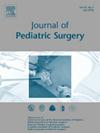回顾低滴度 O 组全血(LTOWB)输血在小儿创伤患者初期复苏中的应用:评估潜在益处。
IF 2.5
2区 医学
Q1 PEDIATRICS
引用次数: 0
摘要
背景:在美国,继发于创伤的失血性休克是导致儿科死亡的主要原因。及时干预对防止许多此类死亡至关重要。由于血容量比率和受伤模式不同,儿童和成人对创伤的反应也各不相同。低血压的儿科患者面临休克的风险更高,因此需要更加果断的复苏:本研究综述了有关儿科创伤中低血压输血的文献。截至 2022 年 12 月,我们使用 LTOWB 和儿科创伤复苏相关关键词进行了电子数据库检索。我们考虑了随机/非随机、回顾性/前瞻性研究,评估了血清学安全性、不良反应、临床结果和成本效益:结果:最终审查了六篇文章。未发现与溶血生物标志物相关的不良反应。临床结果显示,LTOWB疗法和成分疗法(CT)在死亡率、住院天数或呼吸机天数方面没有明显差异。不过,LTOWB 输血能更快地缓解基础缺损,降低 INR,减少对补充性血浆和血小板输注的需求。在军事和大量输血病例中,LTOWB 与死亡率降低和输血量减少有关。一篇文章指出了潜在的经济优势:LTOWB输血似乎是儿科创伤复苏的一个很有前景的选择,它在快速给药和成分平衡方面具有优势。虽然一些研究表明 LTOWB 输血在临床结果和成本效益方面具有潜在优势,但目前的证据有限,需要进一步调查。未来的研究应侧重于大规模研究,以验证这些发现,尤其是有关经济效益的发现,并为在儿科环境中使用 LTOWB 制定标准化方案:治疗研究,第三级。本文章由计算机程序翻译,如有差异,请以英文原文为准。
Review of Low Titer Group O Whole Blood (LTOWB) Transfusion in Initial Resuscitation of Pediatric Trauma Patients: Assessing Potential Benefits
Background
Hemorrhagic shock secondary to trauma is a leading cause of pediatric mortality in the United States. Timely intervention is crucial to prevent many of these deaths. Children and adults exhibit distinct responses to trauma due to varying blood volume ratios and injury patterns. Pediatric patients with hypotension face a heightened risk of shock, demanding a more assertive resuscitation.
Methods
This study is a review of the literature on LTOWB transfusion in pediatric trauma. We conducted electronic database searches until December 2022, using keywords related to LTOWB and pediatric trauma resuscitation. Randomized/non-randomized, retrospective/prospective studies were considered, assessing serological safety, adverse reactions, clinical outcomes, and cost-effectiveness.
Results
Six articles were ultimately reviewed. No adverse reactions related to hemolysis biomarkers were observed. Clinical outcomes exhibited no significant differences in mortality, hospital, or ventilator days between LTOWB and component therapy (CT). However, LTOWB transfusion resulted in faster resolution of base deficit, lower INR, and reduced requirement for additive plasma and platelet transfusions. In military and massive transfusion cases, LTOWB was associated with decreased mortality and lower transfusion volumes. One article suggested potential economic advantages.
Conclusions
LTOWB transfusion appears to be a promising option for pediatric trauma resuscitation, offering benefits in rapid administration and component balance. While some studies indicate potential advantages in clinical outcomes and cost-effectiveness, the current evidence is limited and requires further investigation. Future research should focus on large-scale studies to validate these findings, especially concerning economic benefits, and develop standardized protocols for LTOWB use in pediatric settings.
Levels of evidence
Treatment Study, LEVEL III.
求助全文
通过发布文献求助,成功后即可免费获取论文全文。
去求助
来源期刊
CiteScore
1.10
自引率
12.50%
发文量
569
审稿时长
38 days
期刊介绍:
The journal presents original contributions as well as a complete international abstracts section and other special departments to provide the most current source of information and references in pediatric surgery. The journal is based on the need to improve the surgical care of infants and children, not only through advances in physiology, pathology and surgical techniques, but also by attention to the unique emotional and physical needs of the young patient.

 求助内容:
求助内容: 应助结果提醒方式:
应助结果提醒方式:


